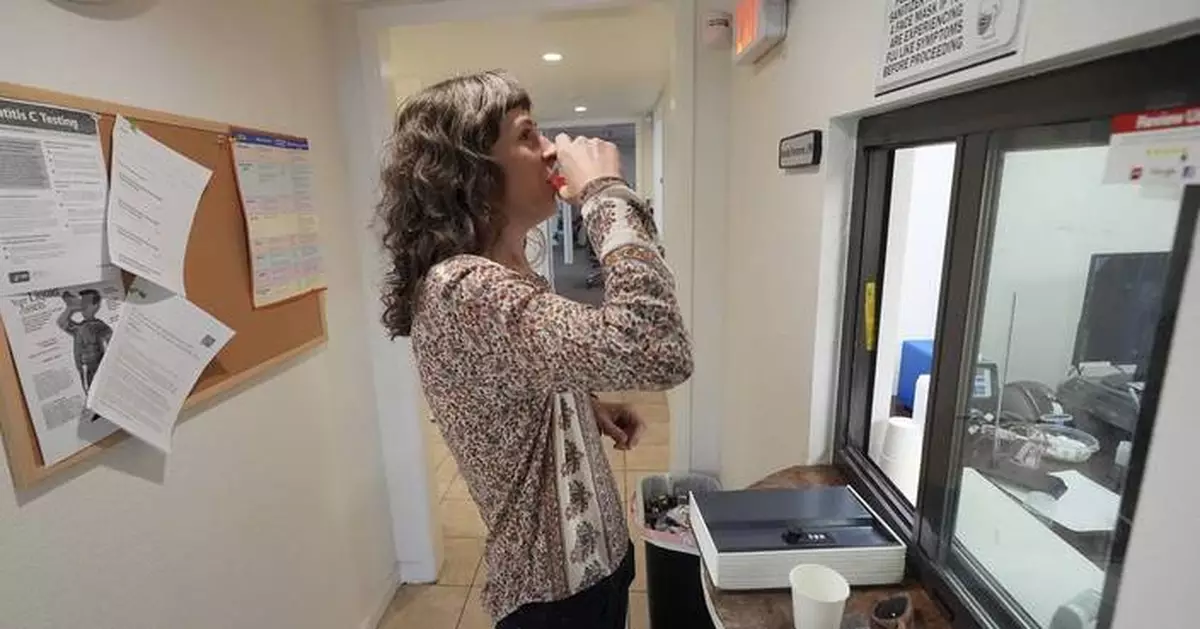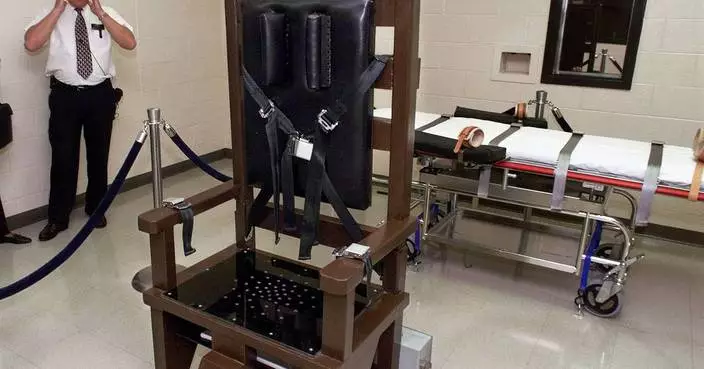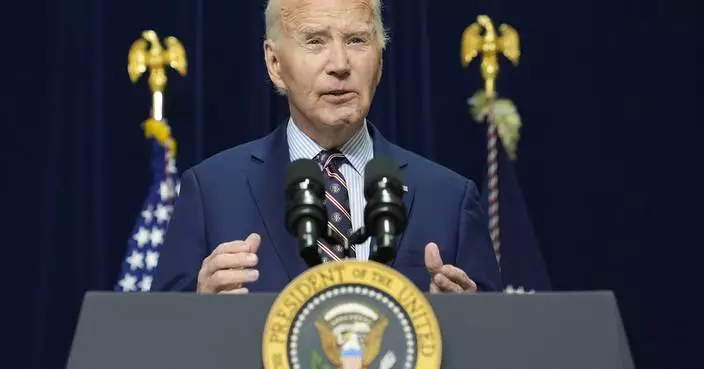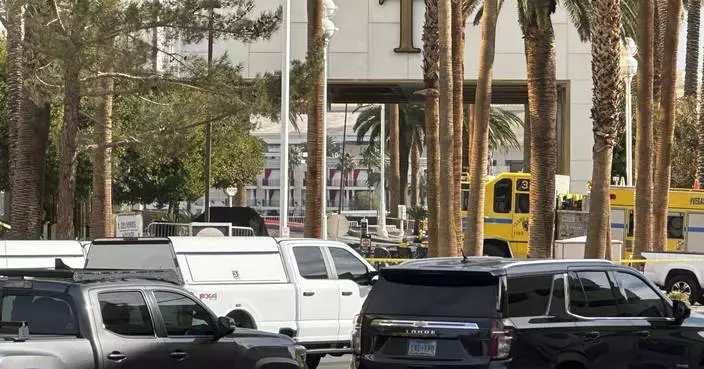The first big update to U.S. methadone regulations in 20 years is poised to expand access to the life-saving drug starting next month, but experts say the addiction treatment changes could fall flat if state governments and methadone clinics fail to act.
For decades, strict rules required most methadone patients to line up at special clinics every morning to sip their daily dose of the liquid medicine while being watched. The rules, built on distrust of people in the grip of opioid addiction, were meant to prevent overdoses and diversion — the illicit selling or sharing of methadone.
Click to Gallery
Methadone patient Irene Garnett, 44, of Phoenix, leaves a clinic after taking her medication in Scottsdale, Ariz., on Monday, Aug. 26, 2024. (AP Photo/Ross D. Franklin)
Methadone patient Irene Garnett, 44, of Phoenix, prepares to leave a clinic after taking her medication in Scottsdale, Ariz., on Monday, Aug. 26, 2024. (AP Photo/Ross D. Franklin)
Methadone patient Irene Garnett, right, 44, of Phoenix, meets with counselor Melodie Reece at a clinic in Scottsdale, Ariz., on Monday, Aug. 26, 2024. (AP Photo/Ross D. Franklin)
Methadone patient Irene Garnett, 44, of Phoenix, waits for her medication at a clinic in Scottsdale, Ariz., on Monday, Aug. 26, 2024. (AP Photo/Ross D. Franklin)
Methadone patient Irene Garnett, 44, of Phoenix, holds her medication lock box at a clinic in Scottsdale, Ariz., on Monday, Aug. 26, 2024. (AP Photo/Ross D. Franklin)
Methadone patient Irene Garnett, 44, of Phoenix, meets with counselor Melodie Reece at a clinic in Scottsdale, Ariz., on Monday, Aug. 26, 2024. (AP Photo/Ross D. Franklin)
Methadone patient Irene Garnett, 44, of Phoenix, sits in the waiting room of a clinic in Scottsdale, Ariz., on Monday, Aug. 26, 2024. (AP Photo/Ross D. Franklin)
Methadone patient Irene Garnett, 44, of Phoenix, takes her treatment at a clinic in Scottsdale, Ariz., on Monday, Aug. 26, 2024. (AP Photo/Ross D. Franklin)
The COVID-19 pandemic changed the risk calculation. To prevent the spread of the coronavirus at crowded clinics, emergency rules allowed patients to take methadone unsupervised at home.
Research showed the looser practice was safe. Overdose deaths and drug diversion didn’t increase. And people stayed in treatment longer.
With evidence mounting, the U.S. government made the changes permanent early this year. Oct. 2 is the date when clinics must comply with the new rules — unless they're in a state with more restrictive regulations.
Alabama — where about 7,000 people take methadone for opioid use disorder — plans to align with the new flexible rules, said Nicole Walden, a state official overseeing substance use services.
“This is a step toward the country — and everybody — saying this is not a bad thing,” Walden said. “People don’t have to show up every day to get a medication that can help save their lives.”
Methadone, an opioid itself, can be dangerous in large amounts. When taken correctly, it can stop drug cravings without causing a high. Numerous studies have shown it reduces the risk of overdose and the spread of hepatitis C and HIV. But it cannot be prescribed for opioid addiction outside of the nation's 2,100 methadone clinics, which on a given day treat nearly 500,000 U.S. patients with the drug.
The new federal rules allow stable patients to take home 28 days’ worth of methadone. Colorado, New York and Massachusetts are among states taking steps to update their rules to align with the new flexibility. Some others have not, including West Virginia and Tennessee — the states with the nation’s highest drug overdose death rates.
“Where you live matters,” said University of Arizona researcher Beth Meyerson, who studies methadone policy.
Phoenix resident Irene Garnett, 44, would welcome more take-home methadone doses. Her clinic now requires her to come in twice a week, even though she's been a patient there more than 10 years, "which is just bonkers,” she said.
Garnett, who works as a grant manager for a harm reduction agency, lives 25 minutes away from the clinic. She said 28 days of take-home methadone, the maximum allowed under the new federal rules, would give her more freedom to travel and a “more normal quality of life.”
“This is the only medication where you have to disrupt your life by going someplace every day,” she said.
Under the new rules, which Arizona plans to embrace, clinics will have broad discretion about which people qualify for take-home doses. Ideally, such decisions will be made jointly between doctors and patients. But money will play a role too, experts said.
Frances McGaffey, who researches substance use treatments for the nonprofit Pew Charitable Trusts, said payments to clinics are sometimes tied to in-person dosing, which can discourage take-home treatment.
"States should be looking at their payment policy and see what kind of care they’re incentivizing,” she said.
In Arizona, clinics now get $15 per in-person dose from the state's Medicaid program vs. about $4 per take-home dose. The state is considering options including making those amounts equal or adopting what’s called “bundled payment,” a model that reflects the overall cost of treatment.
New York's Medicaid program uses a bundled payment model so there's no financial incentive for in-person dosing.
Longtime methadone patient David Frank, a 52-year-old New York University sociologist, gets four weeks of take-home methadone in wafer form from his clinic.
“I never in a million years could have gone back to school, got my Ph.D., done research or taught — any of that stuff — if I had to go to a clinic every day,” Frank said. “It’s night and day in terms of your ability to live a stable, happy, quality life.”
The methadone clinic system dates to 1974, when the U.S. saw fewer than 7,000 overdose deaths a year. Some longtime patients — including Garnett and Frank — are organizing a movement to “liberate methadone” as annual overdose deaths now top 107,000. They support legislation to allow addiction specialist physicians to prescribe methadone and pharmacies to fill those prescriptions.
The new federal rules don't go that far, but they include other changes, such as:
— In states that adopt the rules, methadone treatment can start faster. People will no longer need to demonstrate a one-year history of opioid addiction.
— Counseling can be optional instead of mandatory.
— Telehealth can be used to assess patients, improving access for rural residents.
— Nurse practitioners and physician assistants — not just doctors — can start people on methadone.
“It really is up to states to adopt these changes in order to increase access to care,” said Mark Parrino, president of the American Association for the Treatment of Opioid Dependence.
Tennessee officials have drafted new rules that are stricter than the federal government's. The state's proposal would increase random urine drug screening, make counseling mandatory for many patients and obligate clinics to hire pharmacists if they want to dispense take-home doses.
The state's proposed rules "are duplicative, contradictory, prescriptive, rigid, and written in a way that seeks to punish versus heal people living with an opioid use disorder,” wrote Zac Talbott, who operates four methadone clinics in Tennessee, Georgia and North Carolina.
In states that do adopt the federal rules, the changes will be a heavy lift for some clinics, experts said. Some clinic leaders may disagree with the patient-centered philosophy behind the changes. Some may balk at the legal liability that goes with judgment calls about which people can safely take methadone at home.
“Not all opioid treatment programs are created equal,” said Linda Hurley, CEO of Rhode Island’s oldest methadone program, CODAC Behavioral Healthcare.
Clinics are used to operating within a highly restrictive environment, said Meyerson, the University of Arizona researcher.
“We have regulated them into a corner for years,” Meyerson said. The new rules allow the clinics to put the well-being of patients at the center of care.
“The question is," she said, "can they do it?”
The Associated Press Health and Science Department receives support from the Howard Hughes Medical Institute’s Science and Educational Media Group. The AP is solely responsible for all content.
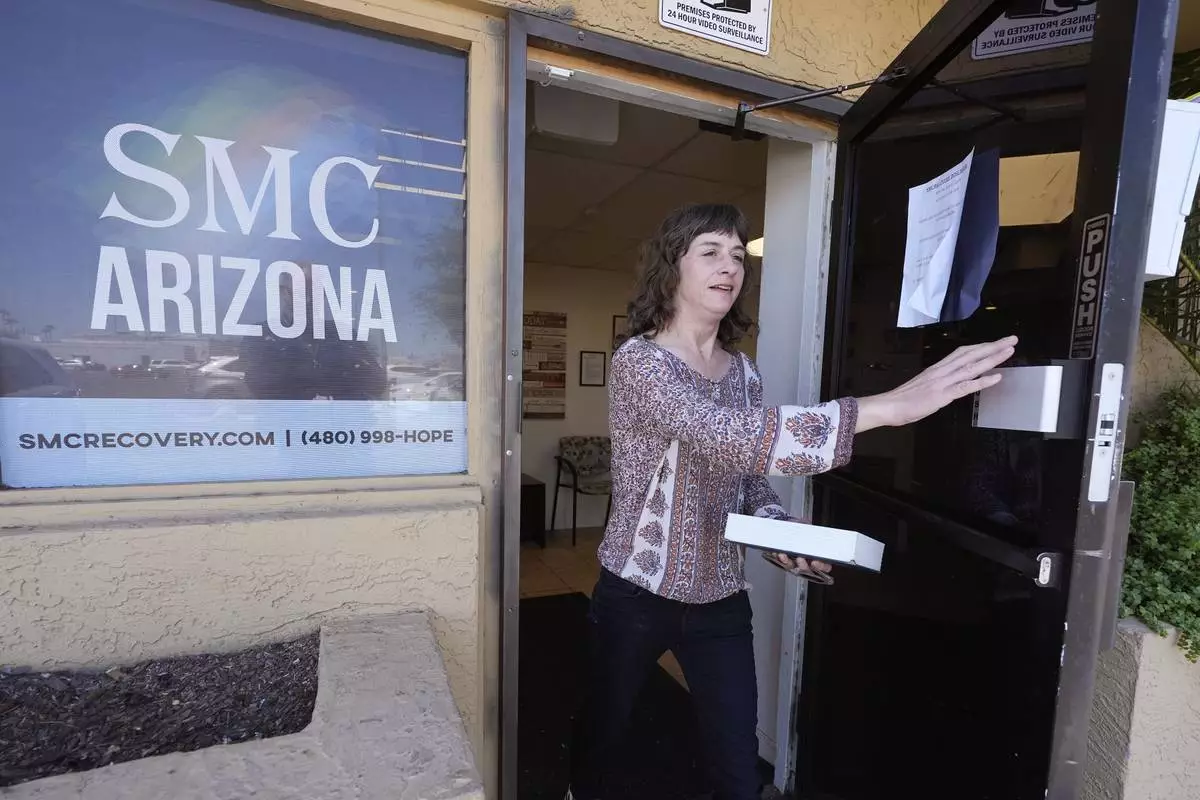
Methadone patient Irene Garnett, 44, of Phoenix, leaves a clinic after taking her medication in Scottsdale, Ariz., on Monday, Aug. 26, 2024. (AP Photo/Ross D. Franklin)
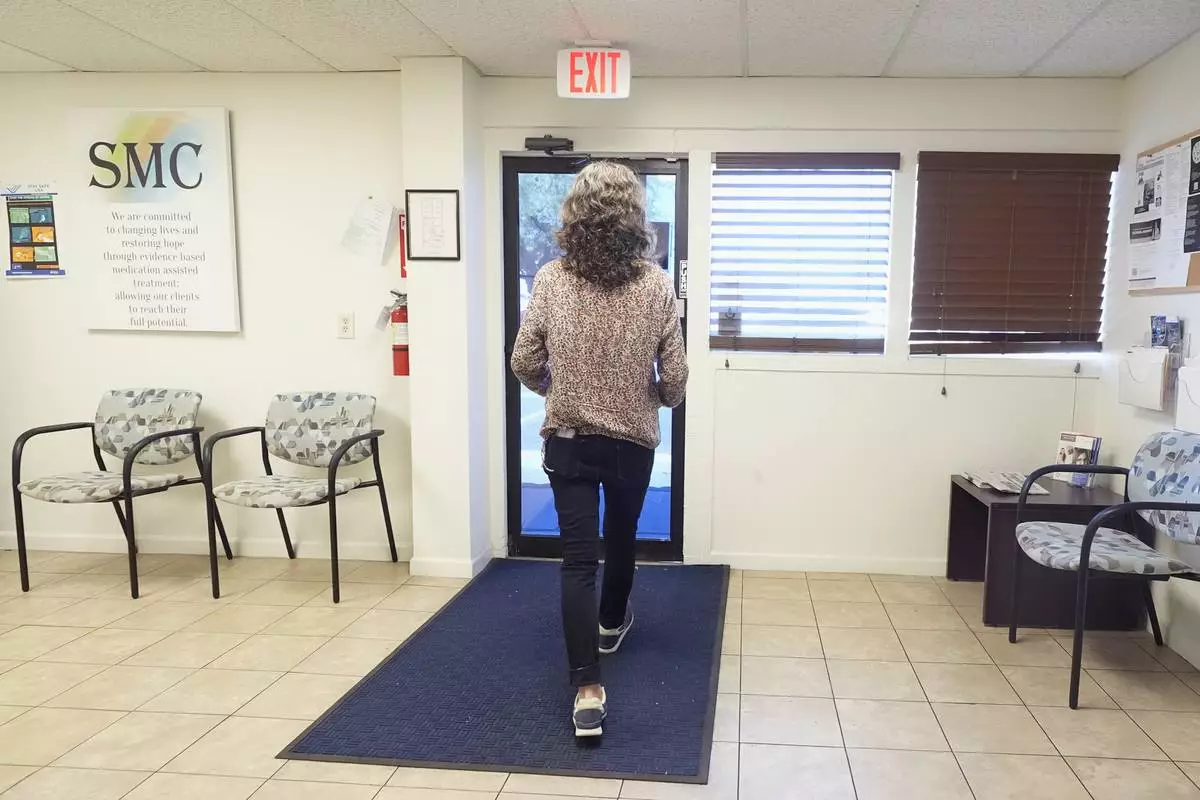
Methadone patient Irene Garnett, 44, of Phoenix, prepares to leave a clinic after taking her medication in Scottsdale, Ariz., on Monday, Aug. 26, 2024. (AP Photo/Ross D. Franklin)
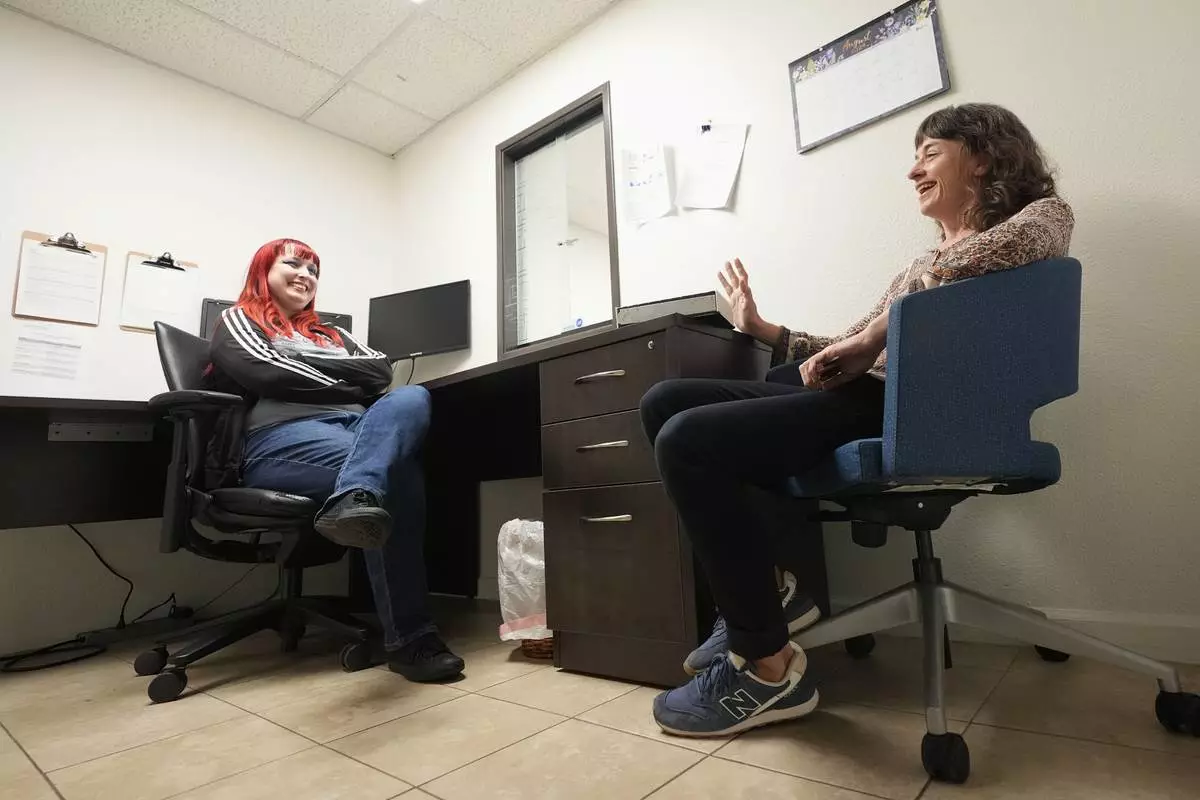
Methadone patient Irene Garnett, right, 44, of Phoenix, meets with counselor Melodie Reece at a clinic in Scottsdale, Ariz., on Monday, Aug. 26, 2024. (AP Photo/Ross D. Franklin)
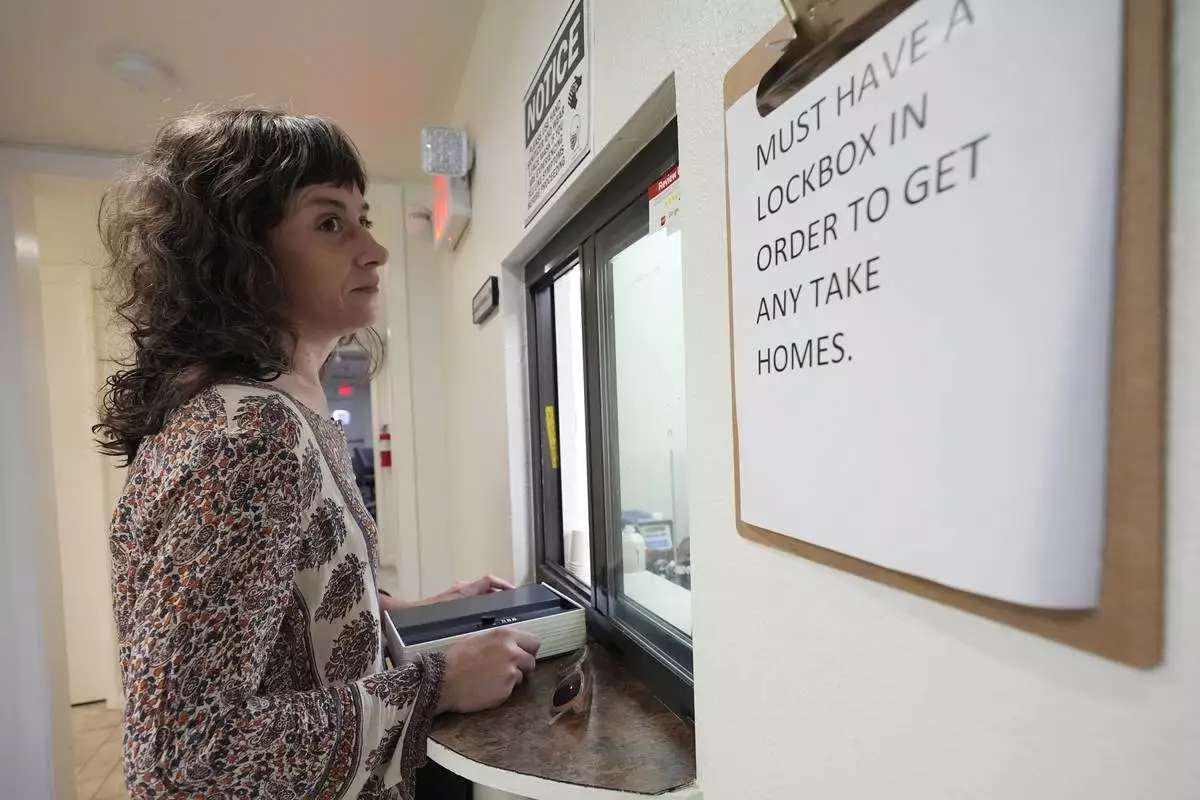
Methadone patient Irene Garnett, 44, of Phoenix, waits for her medication at a clinic in Scottsdale, Ariz., on Monday, Aug. 26, 2024. (AP Photo/Ross D. Franklin)
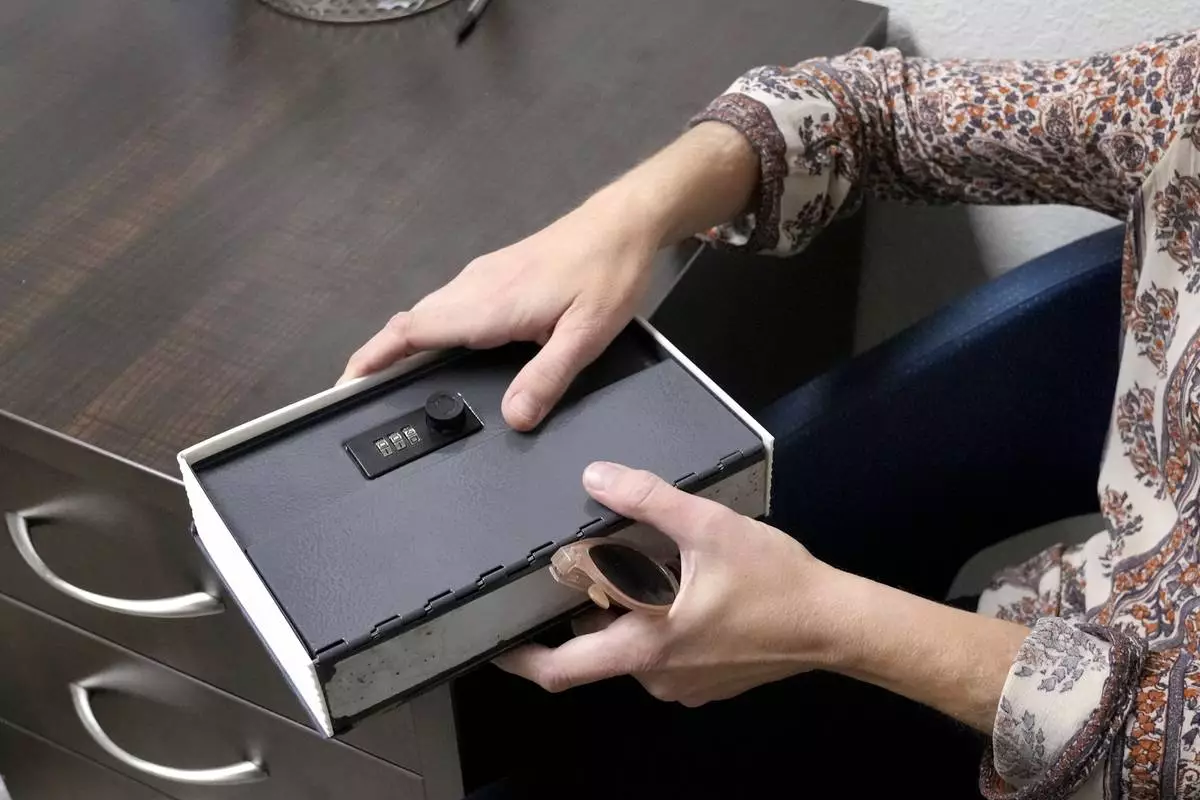
Methadone patient Irene Garnett, 44, of Phoenix, holds her medication lock box at a clinic in Scottsdale, Ariz., on Monday, Aug. 26, 2024. (AP Photo/Ross D. Franklin)
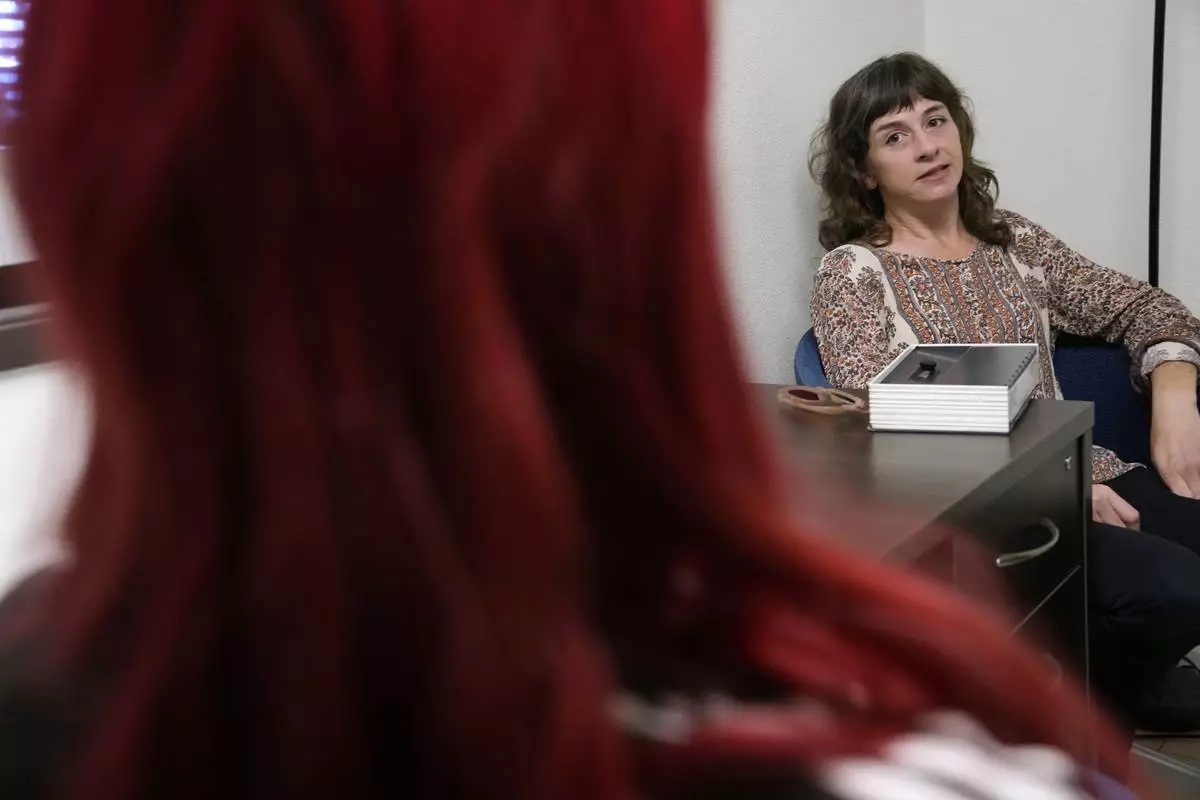
Methadone patient Irene Garnett, 44, of Phoenix, meets with counselor Melodie Reece at a clinic in Scottsdale, Ariz., on Monday, Aug. 26, 2024. (AP Photo/Ross D. Franklin)
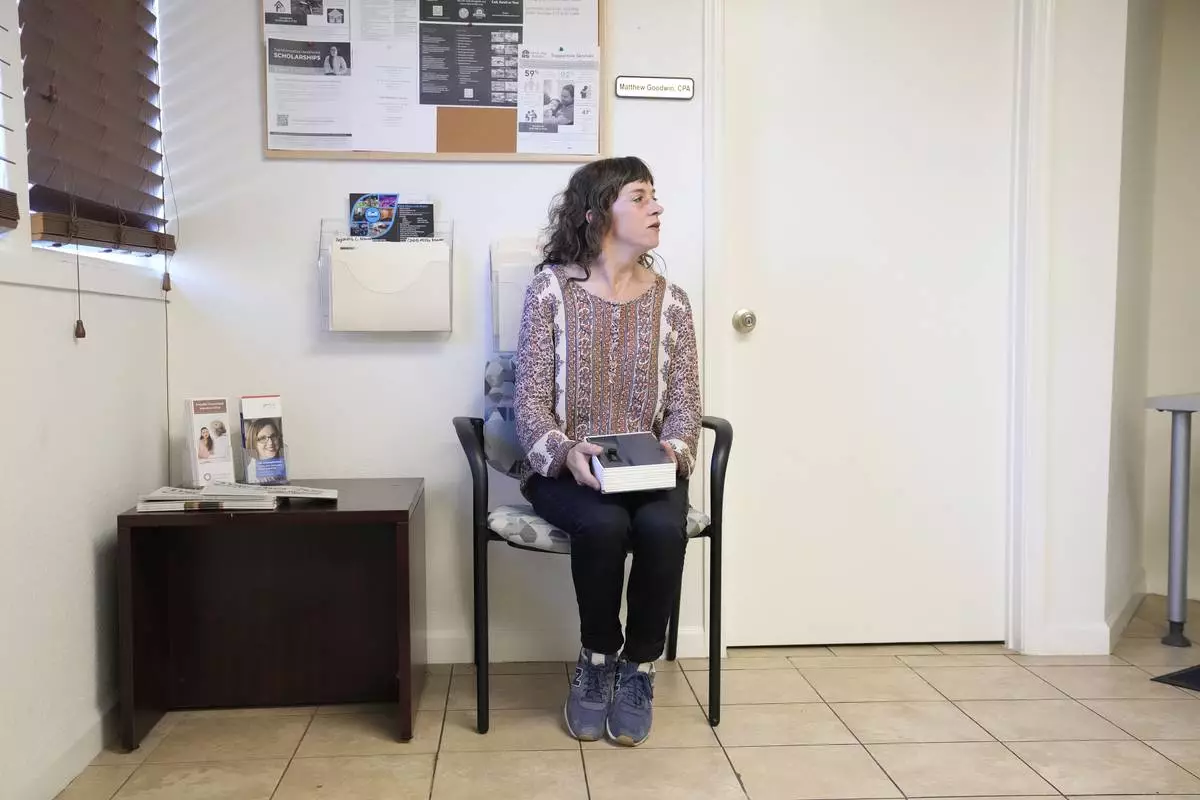
Methadone patient Irene Garnett, 44, of Phoenix, sits in the waiting room of a clinic in Scottsdale, Ariz., on Monday, Aug. 26, 2024. (AP Photo/Ross D. Franklin)
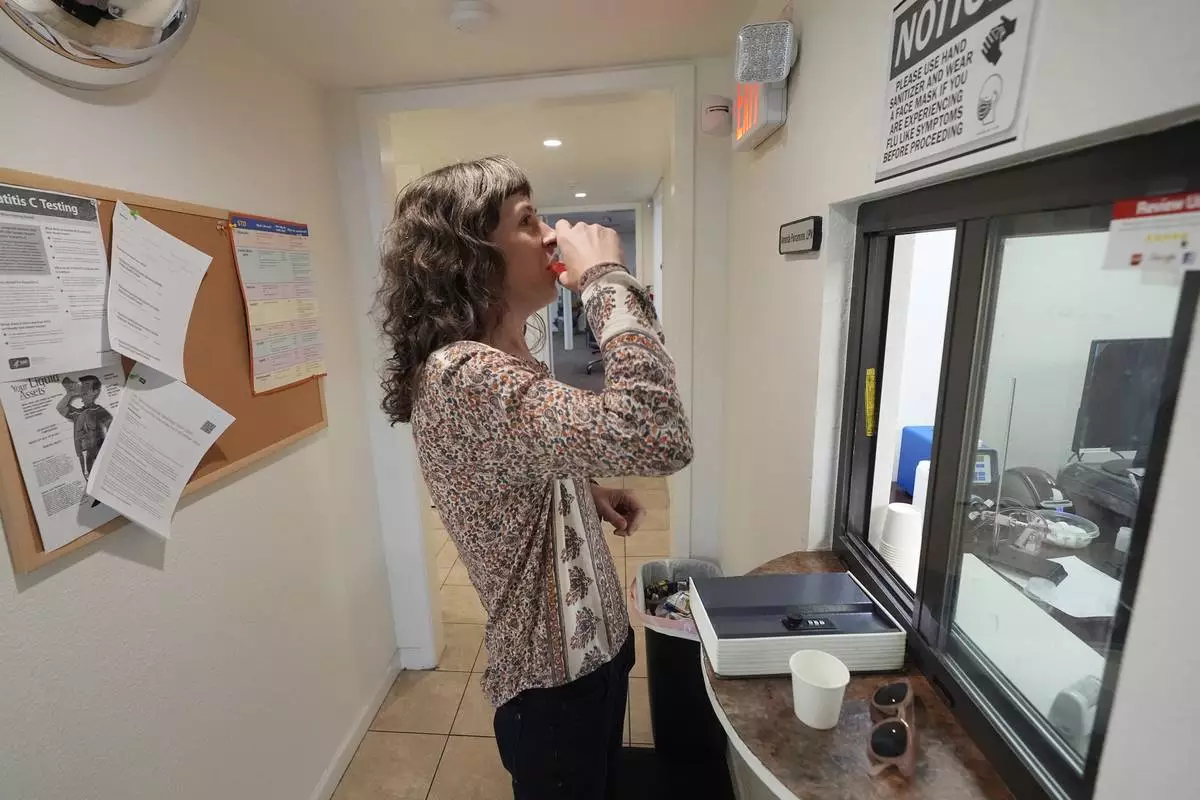
Methadone patient Irene Garnett, 44, of Phoenix, takes her treatment at a clinic in Scottsdale, Ariz., on Monday, Aug. 26, 2024. (AP Photo/Ross D. Franklin)
NEW ORLEANS (AP) — The FBI is investigating an early Wednesday attack in which a U.S. Army veteran drove a pickup truck into a crowd of New Year’s revelers in New Orleans, killing 15 people. The driver had posted videos on social media hours before the carnage saying he was inspired by the Islamic State group and expressing a desire to kill, President Joe Biden said.
The FBI identified the driver as 42-year-old Shamsud-Din Bahar Jabbar.
Officials have not yet released the names of the people killed in the attack, but their families and friends have started sharing their stories. About 30 people were injured.
Here is the latest:
U.S. President Joe Biden said Wednesday evening the FBI was looking into whether an explosion outside a Las Vegas hotel owned by President-elect Donald Trump was connected to the New Orleans attack.
Fireworks and camp fuel canisters were found in a Tesla Cybertruck that blew up outside the Trump International Hotel early Wednesday, killing a suspect inside the vehicle.
The person who died in the explosion was an active-duty U.S. Army soldier who spent time at the base formerly known as Fort Bragg, three U.S. officials told The Associated Press on Thursday. The officials also spoke on the condition of anonymity because they were not authorized to disclose details of his service.
The truck explosion came hours after a driver, 42-year-old Shamsud-Din Bahar Jabbar, rammed a truck into a crowd in New Orleans. Jabbar, a U.S. Army veteran, also spent time at Fort Bragg, a massive Army base in North Carolina that is home to Army special forces command. An official told the AP that there is no apparent overlap in their assignments there.
The investigation so far has not shown the incidents are related, and authorities don’t think the men knew each other, two law enforcement officials said. The officials were not authorized to discuss details of the investigation publicly and spoke on condition of anonymity.
▶ Read more about the Las Vegas Cybertruck explosion
The FBI says it recovered the black banner of the Islamic State group from the truck that smashed into New Year’s partygoers. The investigation is expected to look in part at any support or inspiration that driver Shamsud-Din Jabbar may have drawn from that violent Middle East-based group or from any of at least 19 affiliated groups around the world.
Routed from its self-proclaimed caliphate in Syria and Iraq by a U.S. military-led coalition more than five years ago, IS has focused on seizing territory in the Middle East more than on staging massive al-Qaida-style attacks on the West.
But in its home territory, IS has welcomed any chance to behead Americans and other foreigners who come within its reach. The main group at peak strength claimed a handful of coordinated operations targeting the West, including a 2015 Paris plot that killed 130 people. It has had success, although abated in recent years, in inspiring people around the world who are drawn to its ideology to carry out ghastly attacks on innocent civilians.
▶ Read more about IS and what attacks it has inspired
Louisiana Governor Jeff Landry will be joined at the news conference by officials from the FBI, the Bureau of Alcohol, Tobacco, Firearms and Explosives, the U.S. Attorney’s Office, the Louisiana State Police and the New Orleans Police Department.
The conference is scheduled to begin around 10:15 a.m. CST.
“The Superdome is completely secure,” Louisiana Gov. Jeff Landry said on Fox News. “Again, the FBI continues to pour resources into the state.”
Landry said he plans to attend Thursday afternoon’s college football playoff game between the University of Georgia and the University of Notre Dame.
“We need not let fear paralyze us,” Landry added. “That’s the problem in this country. When we do that, the terrorists win.”
ROME — A telegram of condolences, addressed to Archbishop Gregory Aymond, said Francis was saddened to learn of the attack in New Orleans and was spiritually close to the city.
Francis “prays for healing and consolation of the injured and bereaved,” said the telegram, which was signed by the Vatican secretary of state, Cardinal Pietro Parolin.
Separately, Italian President Sergio Mattarella also sent condolences to President Joe Biden, whom he will see during Biden’s visit to Rome next week, saying all of Italy was mourning the loss of life.
“At this time of sorrow for the American people, I would like to reaffirm the firm resolve of the Italian Republic to oppose in the strongest terms all forms of terrorism, on the basis of those values of civilization, democracy and respect for human life that have always been shared with the United States,” he said in a statement.
The College Football Playoff quarterfinal at the Sugar Bowl between Georgia and Notre Dame was postponed by a day because of the truck attack, which unfolded about a mile away.
The game, originally scheduled for 7:45 p.m. CST at the 70,000-seat Superdome on Wednesday, was pushed back to 3 p.m. Thursday. The winner advances to the Jan. 9 Orange Bowl against Penn State.
“Public safety is paramount,” Sugar Bowl CEO Jeff Hundley said at a media briefing alongside federal, state and local officials, including Louisiana Gov. Jeff Landry and New Orleans Mayor LaToya Cantrell. “All parties all agree that it’s in the best interest of everybody and public safety that we postpone the game.”
The decision to postpone the game meant numerous traveling fans with tickets would not be able to attend. Ticket prices online plummeted in some cases to less than $25 as fans with plans to depart on Thursday tried to unload them.
The Superdome was on lockdown for security sweeps on Wednesday morning. Both teams spent most of the day in their hotels, holding meetings in ballrooms.
▶ Read more about the decision to postpone the Sugar Bowl
Officials have not yet released the names of the 15 people killed in the New Orleans New Year’s Day truck attack, but their families and friends have started sharing their stories.
Here’s a look at some of what we know:
▶ Read more about the victims of the New Orleans truck attack
Authorities say the driver of a pickup truck sped through a crowd of pedestrians gathered in New Orleans’ bustling French Quarter district early on New Year’s Day, killing at least 15 people and injuring about 30 others. The suspect was killed in a shootout with police.
The FBI is investigating the attack as an act of terrorism and said it does not believe the driver acted alone.
Wednesday’s attack unfolded on Bourbon Street, known worldwide as one of the largest destinations for New Year’s Eve parties. Large crowds had also gathered in the city ahead of the College Football Playoff quarterfinal at the Sugar Bowl, which had been scheduled for later Wednesday at the nearby Superdome. The game was postponed until Thursday afternoon following the attack.
▶ Catch up on what we know about the New Orleans truck attack
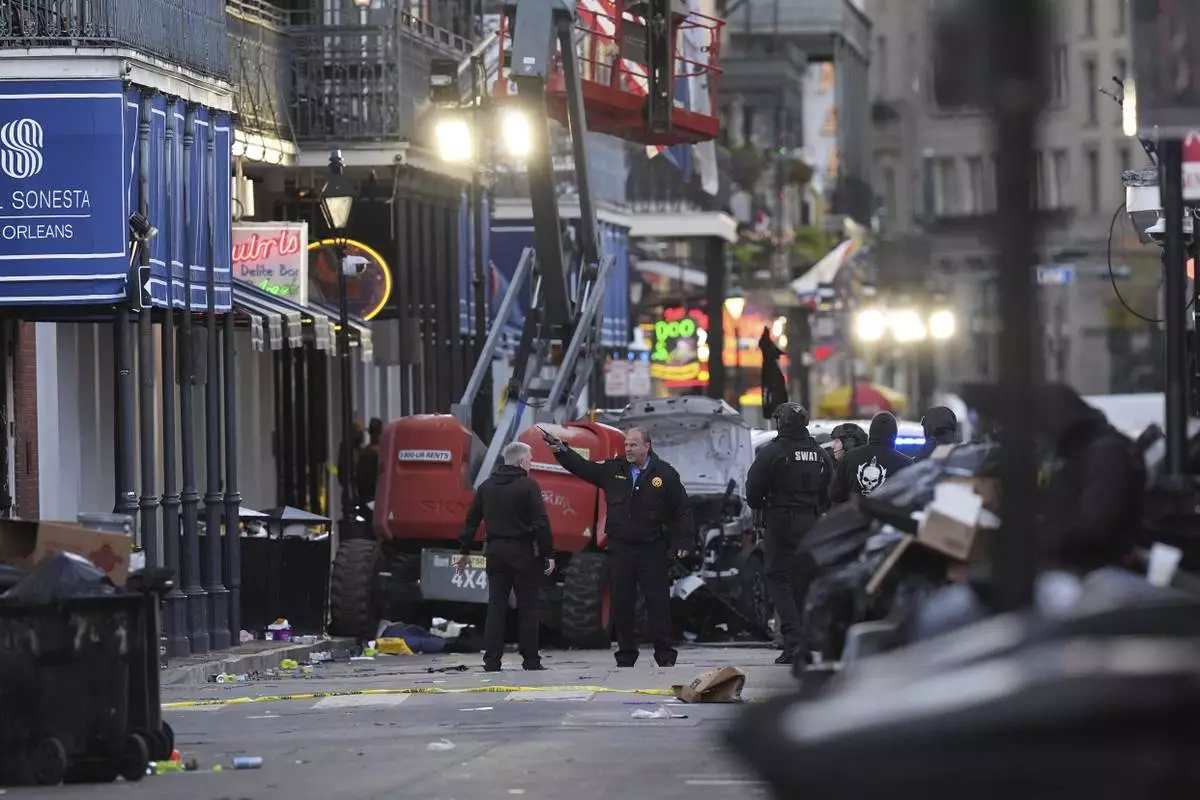
EDS NOTE: GRAPHIC CONTENT - Emergency personnel work the scene on Bourbon Street after a vehicle drove into a crowd on New Orleans' Canal and Bourbon Street, Wednesday Jan. 1, 2025. (AP Photo/Gerald Herbert)
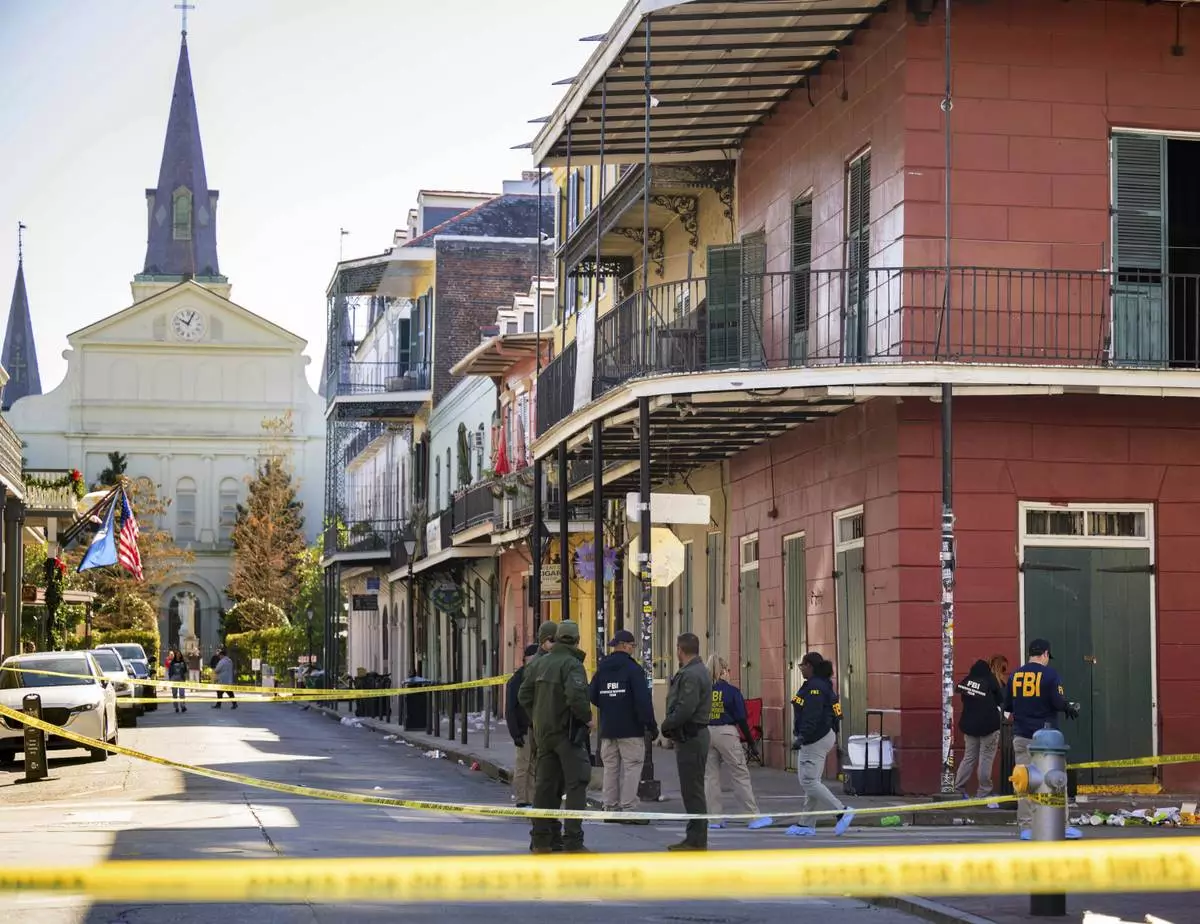
The FBI investigates the area on Orleans St and Bourbon Street by St. Louis Cathedral in the French Quarter where a suspicious package was detonated after a person drove a truck into a crowd earlier on Bourbon Street on Wednesday, Jan. 1, 2025. (AP Photo/Matthew Hinton)
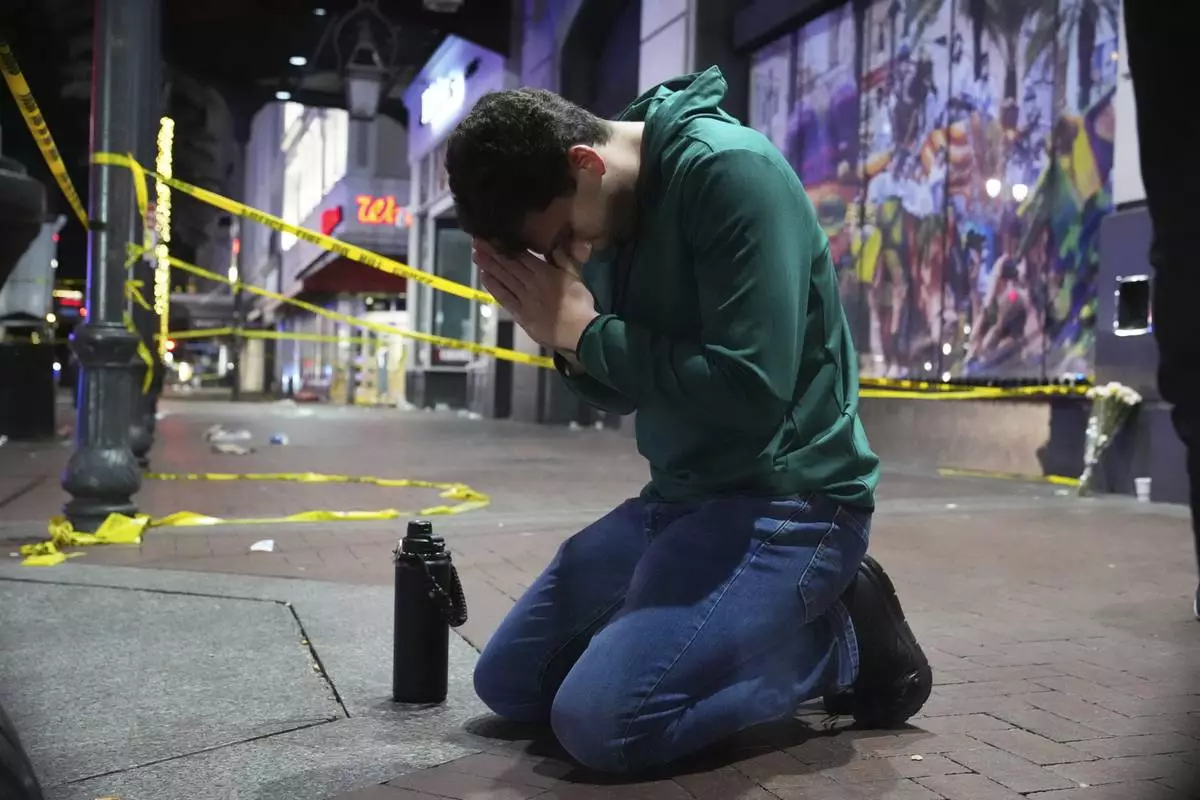
Matthias Hauswirth of New Orleans prays on the street near the scene where a vehicle drove into a crowd on New Orleans' Canal and Bourbon streets, Wednesday, Jan. 1, 2025. (AP Photo/George Walker IV)
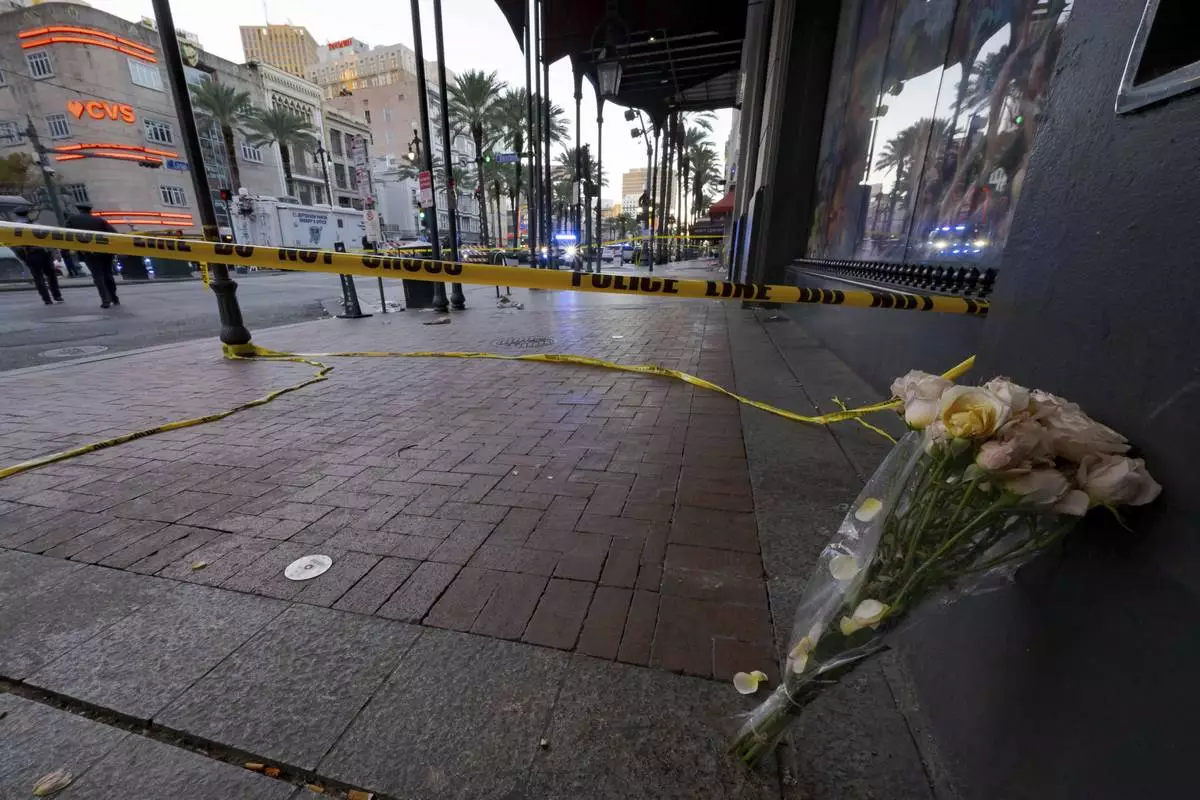
A bouquet of flowers stands at the intersection of Bourbon Street and Canal Street during the investigation after a pickup truck rammed into a crowd of revelers early on New Year's Day, Wednesday, Jan. 1, 2025, in New Orleans. (AP Photo/Matthew Hinton)
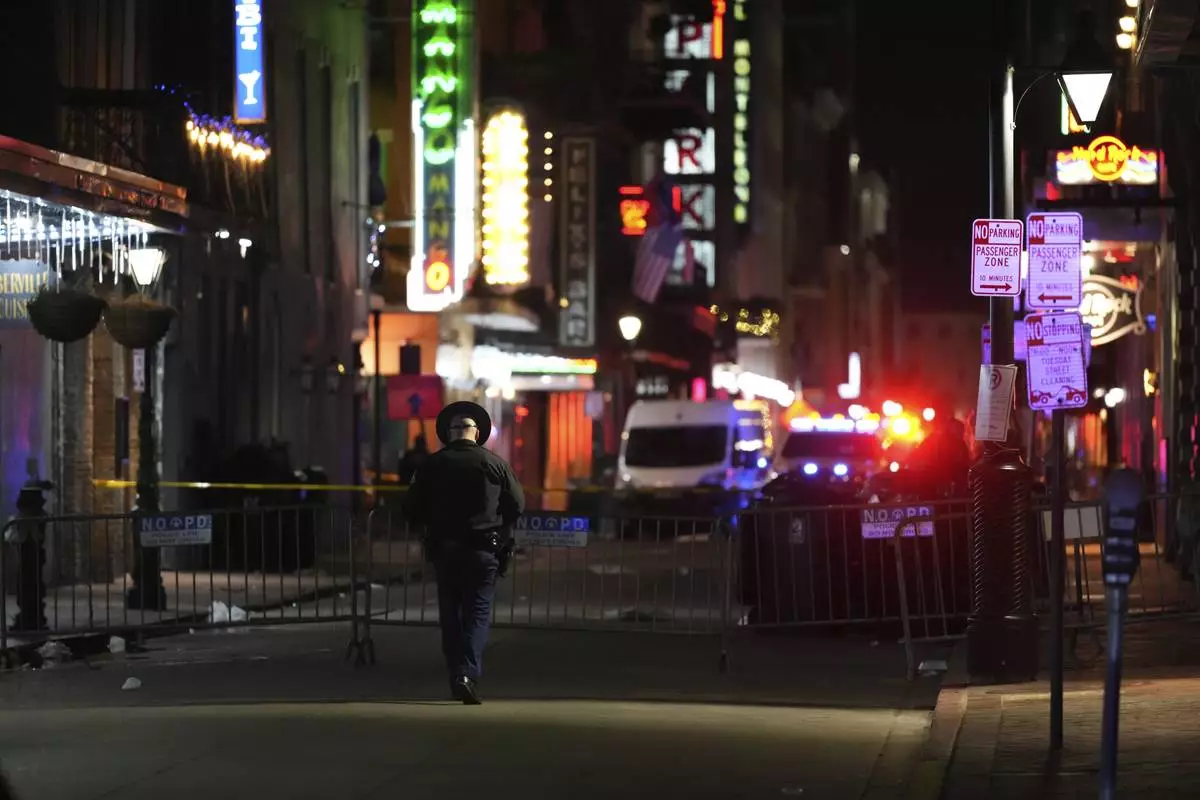
An officer walks along Conti Street after a vehicle drove into a crowd on New Orleans' Canal and Bourbon streets, Wednesday, Jan. 1, 2025. (AP Photo/George Walker IV)
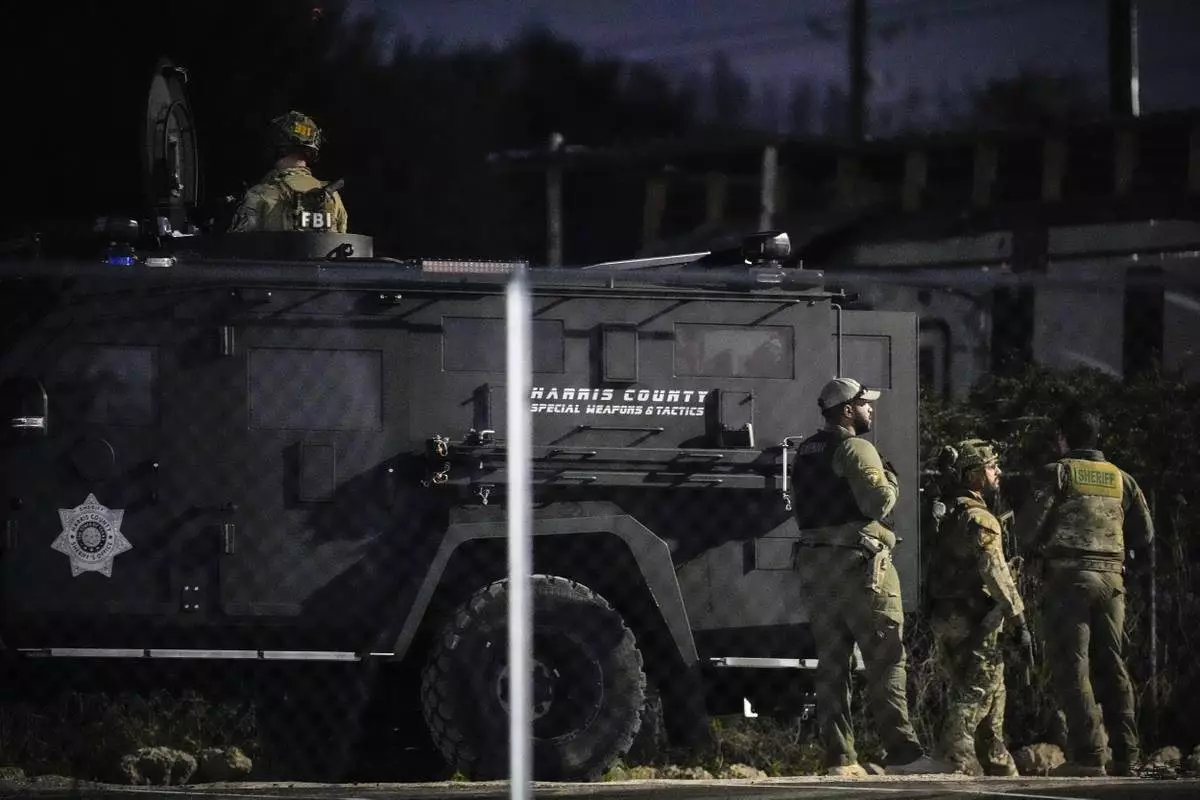
Law enforcement officers stand behind a SWAT vehicle near a location in Houston, Texas, Wednesday, Jan. 1, 2025, where police personnel investigate the place suspected to be associated with an attacker in a deadly rampage in New Orleans. (Brett Coomer/Houston Chronicle via AP)
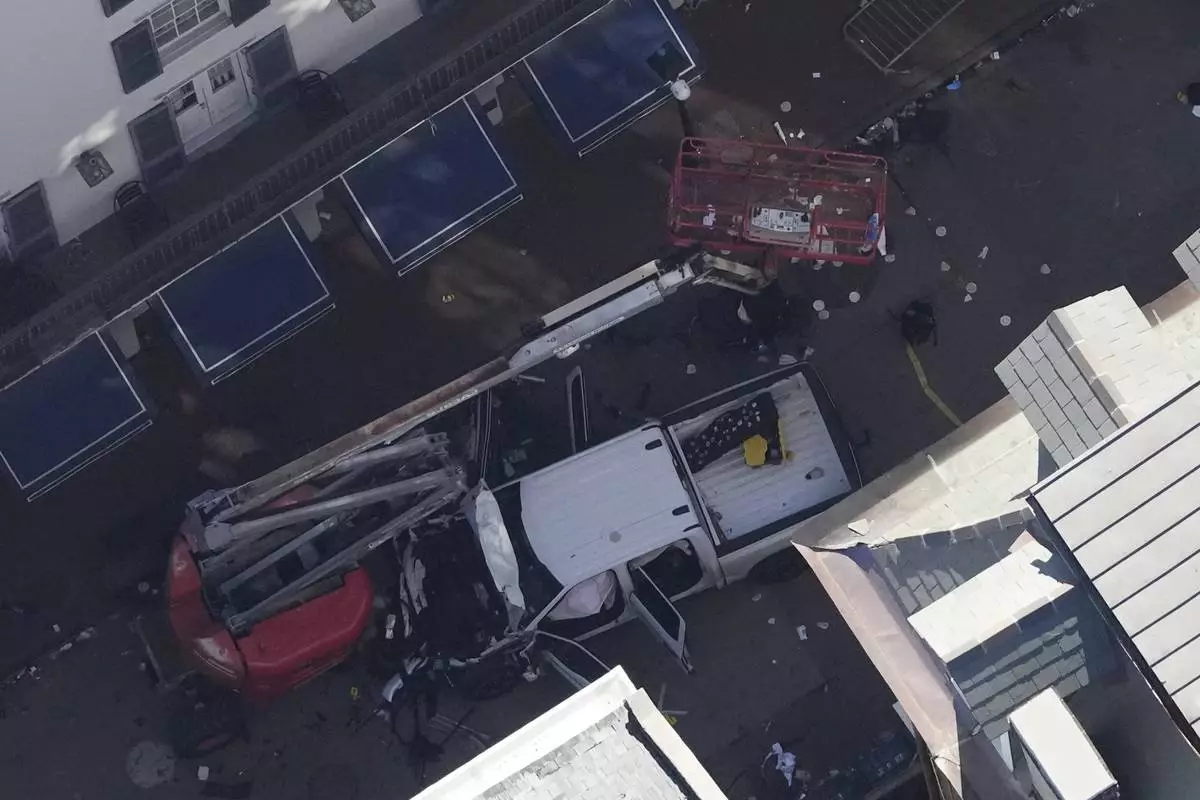
Investigators work the scene after a person drove a vehicle into a crowd earlier on Canal and Bourbon Street in New Orleans, Wednesday, Jan. 1, 2025. (AP Photo/Gerald Herbert)
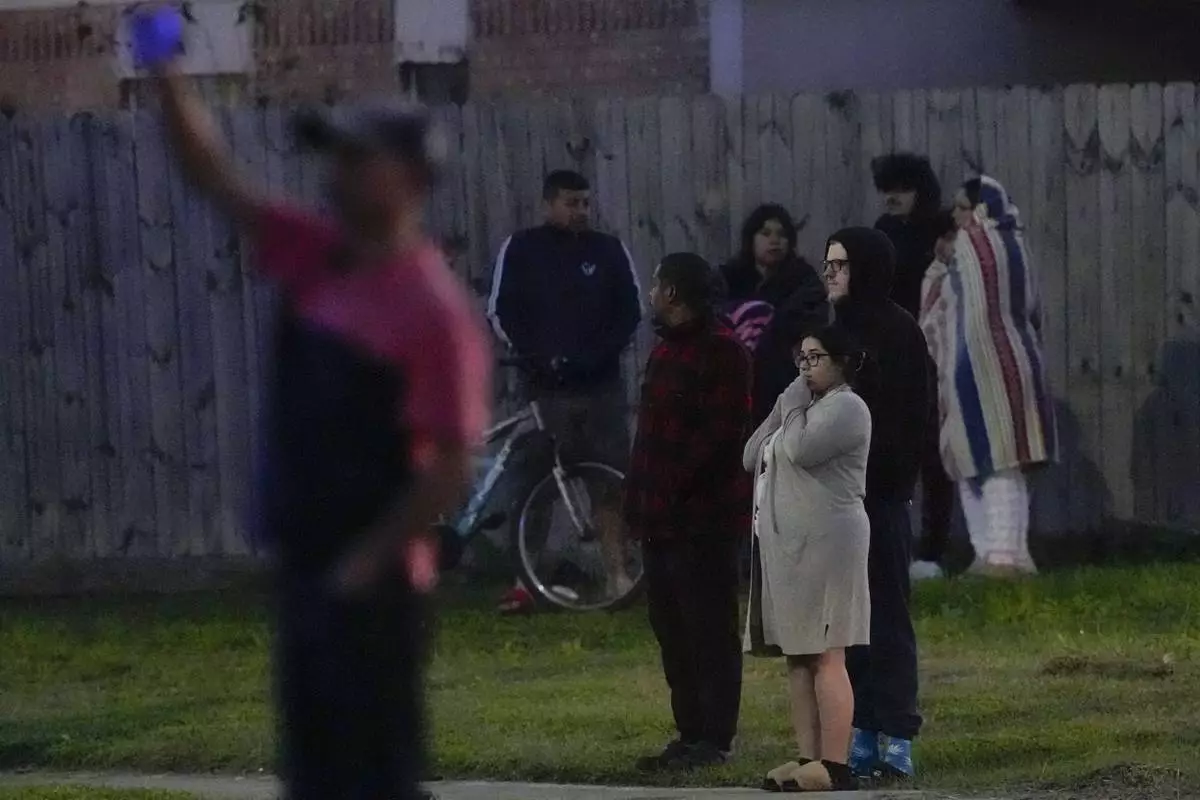
Neighbors stand and watch outside the police lines surrounding a location in Houston, Texas, Wednesday, Jan. 1, 2025, where police personnel investigate the place suspected to be associated with an attacker in a deadly rampage in New Orleans. (Brett Coomer/Houston Chronicle via AP)
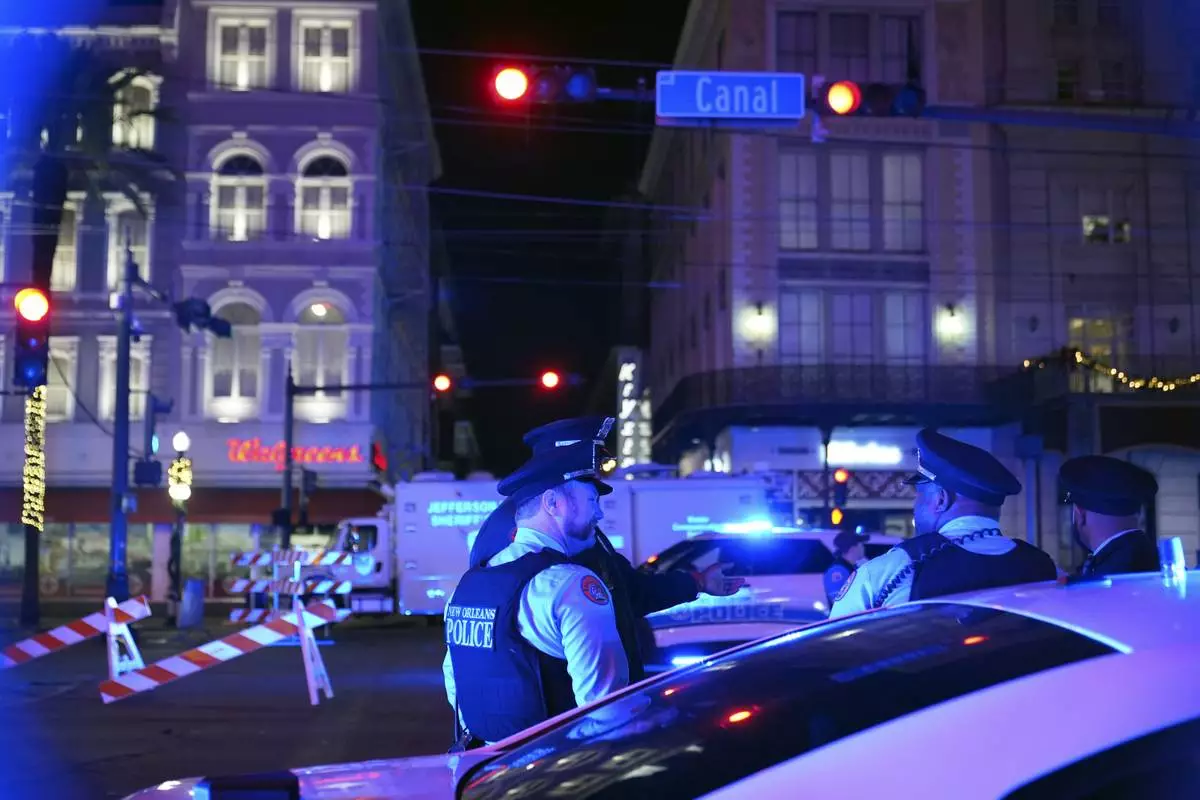
Police officers stand near the scene where a vehicle drove into a crowd on New Orleans' Canal and Bourbon streets, Wednesday, Jan. 1, 2025. (AP Photo/George Walker IV)
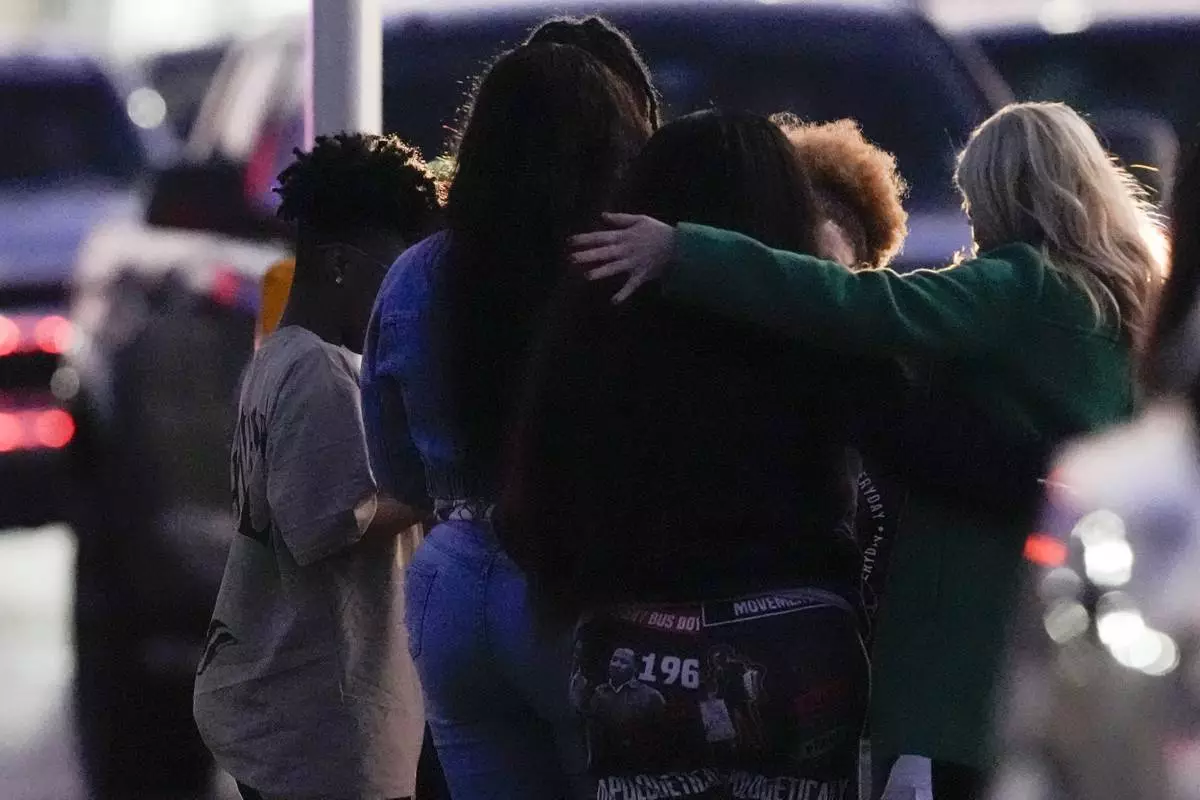
Neighbors embrace as they stand outside the police lines surrounding a location in Houston, Texas, Wednesday, Jan. 1, 2025, where police personnel investigate the place suspected to be associated with an attacker in a deadly rampage in New Orleans. (Brett Coomer/Houston Chronicle via AP)










